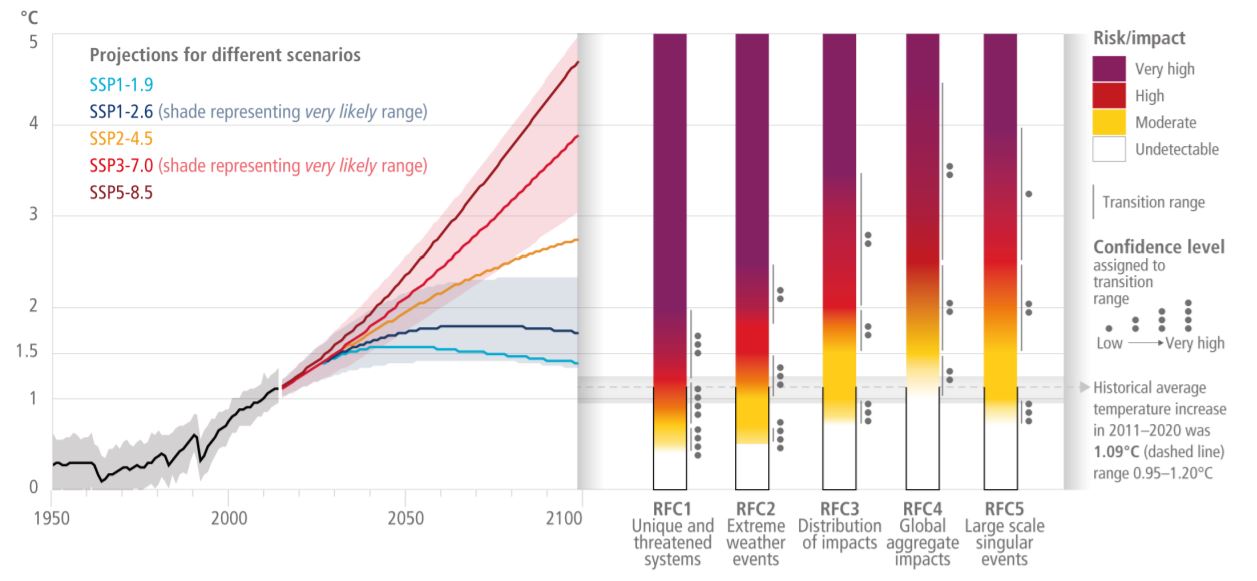We now know that the earth is warming faster than we previously thought. In their first sub-report of the Assessment Report 6 last summer, the IPCC published the most recent scientific insights into climate change. In the second sub-report, which came out yesterday, the scientific panel discusses the risks that result from a warming earth.
And the risks are also much greater than we previously thought.
From “code red” to “code black”
“Code red for humanity” read the headlines of several newspapers last summer. We’ve since had a new record winter in the Netherlands, with the temperature in De Bilt not staying below freezing point for a single day. And during the Olympic Games in China, the organizers were visibly affected by climate change: almost all slopes were covered with artificial snow, while the mountains around the slopes were gray and black.
Through COVID we have learned once again what color codes mean: in the lockdown, hospitals went into “code red,” which meant patient stops and new protocols would come into effect. The risks of “code black” dominated the news for a few days too: code black must be prevented at all costs, but measures are being prepared to enable us to act should it occur.
What’s the biggest difference between COVID and climate when it comes to color codes? When hospitals are in “code red” we do everything in our power to prevent “code black.” But when “code red for humanity” is the result of climate change, we do… pretty much nothing.

Risks due to climate change in five different ‘impact areas’. Even if we limit global warming to below two degrees, there are still major risks.
Source: IPCC, Assessment Report 6 | Working Group II
Preventing loss of health
This preparation for “code black” is nothing more than professional risk management – in this case to prevent overload in healthcare. We do the same in road safety to prevent accidents and injuries, in construction to ensure the safety of executive personnel, and in food safety and hygiene to prevent unintended illness. We are all prepared to take many measures and incur costs to minimize the risk of damage to health.
In the meantime, climate change has become one of the biggest threats to our health – not just in the long term but today. Climate change is causing additional stress among the younger generations as well as older people with vulnerable health. (And for me personally, incidentally.) Climate change leads to larger distribution areas for diseases, including dengue fever and malaria. And climate change is causing a sharp increase in premature deaths.
Limiting climate change is about securing our safety – but in the longer term.
Safety as an example
What if we used the way we approach safety as an example for how we approach climate change? If we’re prepared to make safety belts mandatory in all cars, are we prepared to make emission-free propulsion mandatory too? If we’re prepared to spend more on a construction project to cover risks, are we also prepared to spend more on a project to lower its climate impact? And if we’re prepared to close unsafe buildings, are we prepared to close climate polluting factories too?
Preventing further climate change is professional risk management. And considering the magnitude of the risks and their potential impact, these are risks to take very seriously.
Finally
When there are risks, there is always a chance that everything will go well. But when it comes to the liveability of our planet and the health of ourselves and our children, do we want to run the risk of things not going well?
The cumulative scientific evidence is unequivocal: Climate change is a threat to human well-being and planetary health. Any further delay in concerted anticipatory global action on adaptation and mitigation will miss a brief and rapidly closing window of opportunity to secure a liveable and sustainable future for all. Signed, IPCC.